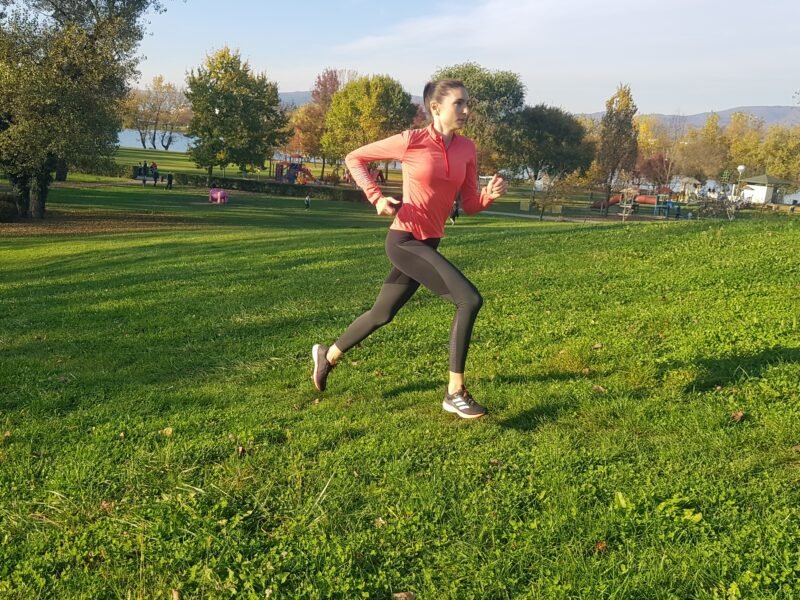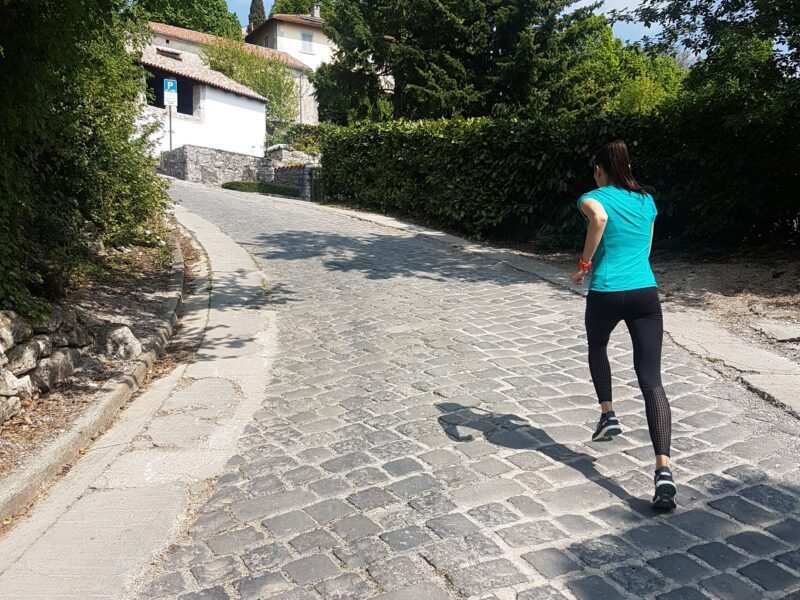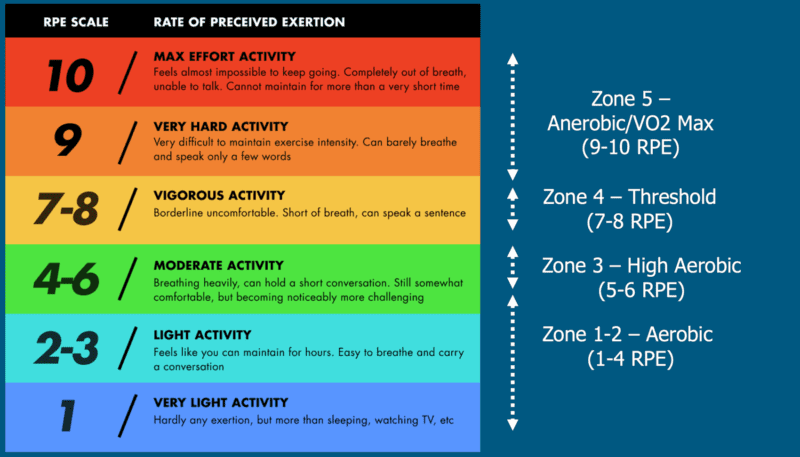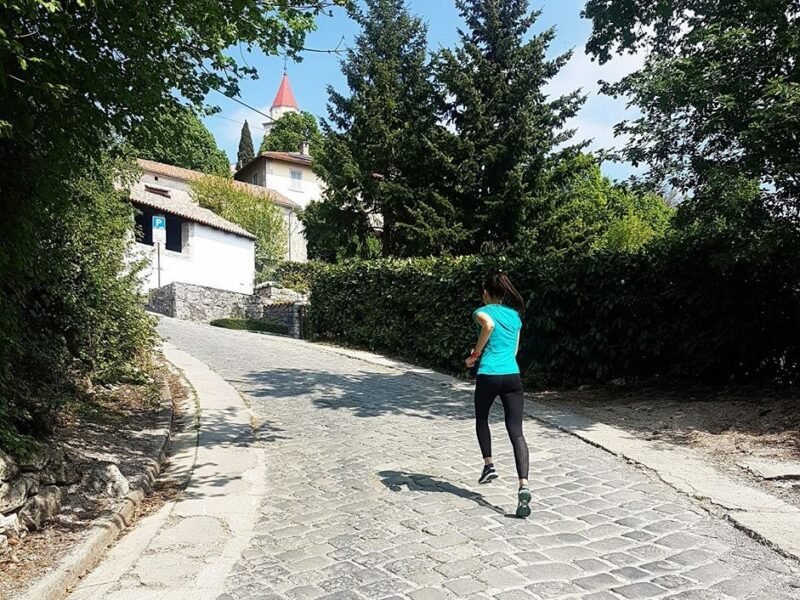Hill Training (8 Best Hill Running Workouts)
Regardless of whether you are preparing for a race on hilly or flat terrain, hill training will help you build your fitness and improve your efficiency and performance.
You may not be a fan of hill running, but numerous studies have shown that hill running is a great way to increase strength, improve speed, and build self-confidence.
In this article, I will explain in detail everything you need to know about hill training to be able to include it in your training plan.
What is hill training?
Hill training is a type of training that includes running on a slope for a certain number of repetitions or continuously without stopping. It is a specific type of strength workout for runners and serves to improve endurance, stamina, speed, and neuromuscular coordination.
Due to its versatility, hill training is great for all runners.
Hill running is less likely to cause injuries due to the reduced returning force that is generated when your body comes in contact with the ground at each step.
A study has shown that 12 weeks of hill training significantly improves stamina, reduces resting heart rate, and improves maximum oxygen intake (VO2 max) in middle- and long-distance runners.
Interestingly, improvements were achieved without significant changes in the risk of injury.
Tip
Hill training is not an adequate replacement for strength training. Therefore, leave space for it in your training plan.

Hill training types
1. Hill repeats
Hill repeats are a type of hill training that consists of running uphill over a certain number of repetitions.
This includes a pause in the form of walking or running downhill back to the starting line.
This type of training is great for beginners due to its versatility.
There are a number of variations of hill repeats that depend on the gradient of a hill and the distance, so a workout can be made for all types of runners.
Read more: How to Run Hill Repeats? (4 Amazing Hill Running Workouts)
2. Long hill run
The long hill run is a type of hill running workout that consists of continuous uphill running, without stopping.
This type of training is meant for more experienced runners who want to further improve their capabilities, especially for those who are preparing for a certain race on hilly terrain, a half marathon, or a marathon.
Read more: Long Hill Run (6 Benefits & 7 Answered Questions in Detail)
3. Rolling hills
Rolling hills are a type of hill running workout that consists of continuous alternating between running uphill and downhill, without stopping.
This type of training is a great form of introduction to hill running as it gradually adapts your body to the exertion of running uphill and downhill.

Is hill training good for running?
One of the ways to improve your running is to include hill running in your training plan.
Hill training builds runners’ strength, improves their endurance and speed, and is great for improving their running economy.
Aside from becoming better at hill running, hill training helps you be better at running on flat ground.
Why should you do hill training?
Although hill running is hard and challenging, it has positive effects on your body and running. Hill training will make you a stronger, faster, and more efficient runner.
Benefits can be noticed relatively quickly. In only six weeks of regular hill training, you can expect significant improvement in your muscle strength and speed.
A study conducted on 20 long-distance runners has shown that six weeks of high-intensity interval hill running improves one’s running economy. Runners were on average two percent faster in 5K races.
Hill training improves your body’s overall strength.
When you run uphill, you have to beat the slope against the resistance of your weight and gravity, and better activate your lower body muscles, which leads to their strengthening.
You work with your arms more intensely and thus you strengthen your upper body as well.
Likewise, when you run uphill, you run on the balls of your feet.
That way, you develop strength that allows you to push off the ground more explosively.
By running on the balls of your feet, you spend less time on the surface and thus run faster.
Hill training improves your running form by removing unnecessary movements and improper posture during running.
Likewise, hill training improves your cadence, stride length, and thus the running economy.
Read more: 14 Amazing Hill Running Benefits for Runners

How to do hill training?
To master hill running more efficiently, read the following tips.
1. Pay attention to your posture
While running uphill, keep your body upright. Look straight ahead.
If you hunch over, you will reduce the flow of oxygen. Also, if you lean excessively, you won’t be able to grab the surface properly because you will reduce the range of motion of the hip flexors, which will significantly reduce the running efficiency.
While running downhill, don’t lean too far back.
You have to activate your core to prevent your body’s natural tendency to push the body backward, which slows down your movement.
While running downhill, your body’s center of gravity moves to your heel, leading to braking, which is further increased by leaning backward.
2. Shorten your stride and increase cadence
When you run uphill, your stride length naturally shortens, which is the result of gravity and an increase in slope.
If your stride is too long, you won’t be able to hit the ground beneath you, but in front of you.
That way you will spend more energy, and you won’t be effective.
Tip
The steeper the incline, the shorter your stride needs to be.
3. Work with your arms
When you start struggling, swing your arms more intensely.
That way, your feet will follow the rhythm of your arms to maintain balance, which will allow you to maintain your pace more easily and beat the hill in front of you.
When you run downhill, you do not swing your arms back and forward. Instead, you maintain your balance by spreading your arms to the side.
This will allow you to use your speed in its entirety without compromising your balance.
4. Be careful when running downhill
Running downhill is one of the most frequent causes of a runner’s injury.
At each step, it is necessary to amortize the much higher returning force of the ground compared to running on flat ground.
Therefore, pay attention to your posture, don’t lean too far backward, and do not increase your stride length as this leads to braking and increases the risk of injury.
Run downhill at a slow, controlled pace or go downwalking. If you are doing long hill runs, if possible, organize a ride back to the foot of the hill.
Keep in mind that running downhill can also be very helpful if done occasionally and properly. It is extremely important if you are going to have downhill sections in your race.
In that case, do not avoid them during training so that your body adapts to the increased stress on your body that is present when you run downhill.
5. Maintain the effort, not the running pace
Maintain the effort, not the running pace, and listen to your body.
While running uphill, it is natural that you slow down.
However, you need to maintain the same effort as when you run on flat ground. The steeper the incline, the slower you will be.
However, do not bother yourself with the running pace.
If you try to maintain the same pace while running uphill as the one you have while running on flat ground, it is more probable that you will quit and not finish your workout, which is something you do not want.

How to warm up before hill training?
Before each workout, including the hill training, it is important to properly warm up and prepare your body for exertion.
Read more: 7 Reasons Why You Need to Warm-Up Before Running
Warming up before hill running includes:
- Easy jogging
- Mobility exercises and dynamic stretches
- Strides or doing the first hill repeat at a lower intensity
Tip
Warm up on flat ground and avoid hills. If you are doing hill repeats, do the first repeat at a lower intensity. If you are preparing for a long hill run, then do a couple of strides on flat ground before your start with the main part of the workout.
Adjust the length of warm-up to your physical fitness, weather conditions, and the type of training ahead of you.
If there’s a more intense workout before you, warm up longer and include all the components.
Then, aside from easy jogging, do some mobility exercises and dynamic stretches, along with a couple of strides, or do the first repeat at a slower pace.
Read more: Warm-up Before Running (Ultimate Guide)
At which pace should you do hill training?
The pace and intensity of hill running depend on the training type that you are doing, the slope of the hill, the length of training, your current fitness level, and the phase of the training cycle in which you are.
The best method of determining running pace is following your effort level, that is by running by feel.
Do shorter hill repeats at a higher intensity and very high effort (8-9 RPE). Longer hill repeats and long hill runs are run at a lower intensity and high effort (6-7 RPE).

How much do hills slow you down?
Running on hilly terrain is hard and, naturally, it affects your running pace. How much the hills slow you down depends on your current fitness level, strength, and how well the hills suit you as a runner.
However, keep in mind that you cannot make up for the time you lose while running uphill by running faster downhill.
Read more: Why is Hill Running so Hard? (10 Ways to Make it Easier)
According to research conducted by Jack Daniels, each percentage point of hill gradient will slow you by 12 to 15 seconds per mile when you go uphill, and each percentage point will speed you up by 8 seconds per mile when you go downhill.
There is another, easier method to calculate how much do hills affect your total running time. This method was devised by John Kellogg.
This method is not as precise as the one devised by Jack Daniels, but it is a lot easier to calculate.
His rule says that every 3 meters (10 feet) of altitude change your time by 1.74 seconds, regardless of the horizontal distance that you travel.
His method does not differentiate between going uphill and downhill.
However, everyone who ever ran on hilly terrain will understand that you will not make up for the time you lost running uphill by running downhill.

How steep should a hill be for hill training?
Hill training is done on a slope between 3% (medium) and 15% (steeper).
If the trail is not marked or you do not have a smartwatch, you will hardly be able to determine the exact grade of a slope.
In that case, pick a slope of your choosing and adjust the running pace to the slope itself.
The slope of a hill has a significant effect on many factors, such as:
- Running pace
- Stride length
- Running cadence
- Ground contact time
The steeper a hill is, your pace becomes slower, your stride is shorter, the cadence is lower, and ground contact time is longer because more energy is needed to beat the slope.
On the other hand, on hills with a lower slope, your running pace is faster, the stride is longer, the cadence is higher, and the ground contact time is shorter.
Therefore, if you want to improve your strength and speed, choose hills with steeper slopes.
In doing so, be careful that these slopes are not too steep and that the repeats last longer because, otherwise, they will lead to too slow of a pace.
If you wish to improve your endurance, do longer hill running workouts on less steep slopes.
What if I live in an area where there are no hills?
If you live in an area where there are no hills, you can do hill training on a treadmill, or by running upstairs or on very short, steep slopes, such as overpasses.
Be imaginative and you will be able to get positive effects and improve your abilities even on very short slopes.
How to incorporate hill training into your training plan?
At the beginning of the training cycle, it is desirable to include hill running into your training plan.
That way, you will still be able to focus on building your mileage while maintaining some speed and strength.
Info
With hill running, you will develop speed and strength with less load due to the reduced returning force, consequently, with a lower risk of injury.
The closer the race season is, the more necessary it will be to do specific workouts on running tracks and flat ground.
Of course, if you’re preparing for a race on hilly terrain, it’s recommended to train on hilly terrain right up to the race day.
Read more: Is Hill Running Better than Running on Flat Ground?
If you have just started doing hill running, pick shorter hills with a gentler slope. Over time, as your body adapts to the exertion, gradually increase the slope, length, and number of repeats.
How often should you do hill training?
Hill training is quite demanding and hard; therefore, it is sufficient to do it once per week.
If you do too many intense workouts, you do not allow your body to recover adequately, thus increasing the risk of injury and overtraining.
In order to progress, it is important to combine different types of workouts. Hill training is just one of them.
If you are preparing for a race on hilly terrain, then it is recommended, of course, to do hill training a couple of times per week.
Who can do hill training?
Hill training can be done by all types of runners, from beginners to intermediate runners.
No matter what race you are preparing for, whether a 5K or a marathon, hill training will help improve your abilities.
If you are prone to injuries, running uphill is a safer way to improve speed and strength than running on flat ground.
Due to the lower impact force on the joints, the risk of injury is reduced.
Is hill training good for beginners?
Hill training is also good for beginners. However, beginners are advised not to include hill training in earlier phases of training.
It is necessary to do at least 6 to 8 weeks of base training and run at least 3 times per week, 10 miles per week on average.
If you are a beginner, you should do less intense hill repeats, focusing on proper running form and fewer repetitions.
Gradually increase the intensity, length, and number of repetitions of hill repeats.
Tip
In the beginning, it is important to do less steep and shorter hill repeats and adjust the effort level to your current fitness level so as to avoid injuries and overtraining.
Read more: Should Beginners Run Hills? (Top 7 Reasons Why They Should)

What muscles does hill running work?
When running on hilly terrain, you work the same muscles you work when running on flat ground, but with a different intensity and shorter range of motion.
Read more: Key Muscles Used in Running (8 Main Muscle Groups)
When running uphill, you need to activate your leg muscles (calf muscles, glutes, hamstrings, and quadriceps) more strongly to overcome gravity.
You need to particularly activate your hip flexor muscles to be able to make a full range of motion.
There is a stronger activation of the quadriceps, and less so in the hamstrings when compared to running on flat terrain.
Likewise, your body’s center of gravity is shifted towards the middle and front of the foot, creating more stress on the calf and ankle muscles.
When running downhill, you need to activate the quadriceps and calf muscles more strongly to successfully absorb the effects of gravity.
For this reason, if you do not run downhill regularly, inflammation will consequently occur until the body adapts to this form of exertion.
Is hill running good for weight loss?
Hill running is good for losing weight because it burns significantly more calories compared to running on flat terrain.
When you run uphill, you work against gravity, using your weight as resistance.
Due to the increased effort, more energy needs to be invested. The more energy you invest, the more calories you will burn.
The number of calories you burn depends on the incline, as well as numerous other factors.
Either way, adding hill running to your training plan will increase your fat-burning potential.
Tip
The steeper a hill is, the more energy needs to be invested to overcome it. As a result, you will burn more calories.

Examples of hill running workouts
Adjust your effort level to your current fitness level. However, do not bother yourself with the running pace.
Instead, listen to your body and pay attention to the effort level.
1. Short hill repeats
Example of short hill repeats defined by time
Warm-up – 12 minutes of easy jogging on flat terrain
Main part of the training – 12 x 30 seconds uphill; recovery is walking downhill
Cooldown – 10 minutes of easy jogging on flat terrain
Example of short hill repeats defined by distance
Warm-up – 2 miles of easy jogging on flat terrain
Main part of the training – 10 x 100m uphill; recovery is walking downhill
Cooldown – 1 mile of easy jogging on flat terrain
2. Long hill repeats
Example of long hill repeats defined by time
Warm-up – 10 minutes of easy jogging on flat terrain
Main part of the training – 2 x 5 x 2 minute uphill; recover between the repetitions with some easy jogging, and walk downhill between the series
Cooldown – 10 minutes of easy jogging on flat terrain
Example of long hill repeats defined by distance
Warm-up – 1 mile of easy jogging on flat terrain
Main part of the training – 4 x 3 x 400m uphill; recover between the repetitions with some easy jogging, and walk downhill between the series
Cooldown – 1 mile of easy jogging on flat terrain
3. Long hill run
Example of long hill run defined by time
Warm-up – 5 minutes of easy jogging on flat terrain
Main part of the training – 50 minutes of running uphill
Cooldown – 5 minutes of easy jogging on flat terrain
Example of long hill run defined by distance
Warm-up – 1 mile of easy jogging on flat terrain
Main part of the training – 8 miles of running uphill
Cooldown – 1 mile of easy jogging on flat terrain
4. Rolling hills
Example of rolling hills defined by time
Warm-up – 15 minutes of easy jogging on flat terrain
Main part of the training – 45 minutes of running uphill/downhill
Cooldown – 10 minutes of easy jogging on flat terrain
Example of rolling hills defined by distance
Warm-up – 2 miles of easy jogging on flat terrain
Main part of the training – 6 miles of running uphill/downhill
Cooldown – 1 mile of easy jogging on flat terrain

Matea Matošević
Hi, I’m Matea! I’m an Olympic Marathon Runner, founder, and writer behind OLYRUN.com. On this site, I provide help in the form of my knowledge and experience to all who love running and active living. Read more…

